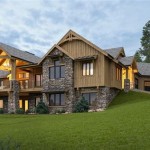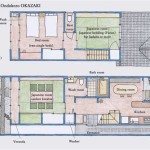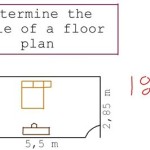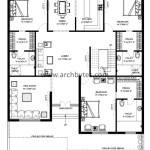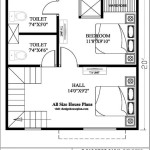Simple House Plans: Affordable And Easy To Build 2024
The cost of housing continues to rise, prompting many individuals and families to seek more affordable and accessible options for homeownership. Simple house plans, often characterized by their compact designs and straightforward construction, have emerged as a viable solution for those looking to build a home on a budget in 2024. These plans prioritize functionality and efficiency, minimizing complex architectural features that can inflate building costs and extend construction timelines.
This article explores the advantages of simple house plans, delves into specific design elements that contribute to affordability and ease of construction, and provides insights into accessing and implementing these plans effectively. By understanding the principles behind simple house design, prospective homeowners can make informed decisions and embark on a building project that aligns with their financial capabilities and lifestyle needs.
Key Point 1: Understanding the Affordability Factor
The primary appeal of simple house plans lies in their cost-effectiveness. Several factors contribute to this affordability. First and foremost, smaller square footage inherently translates to lower material costs. Fewer walls, less roofing, and reduced foundation work significantly decrease the overall expenses associated with building a home.
Furthermore, simple designs often feature rectangular or square footprints, which are more efficient to construct than homes with complex angles or multiple extensions. These basic shapes minimize material waste and simplify the framing process, reducing labor costs. Rooflines are typically straightforward gable or shed designs, further simplifying construction and minimizing the potential for leaks or other structural issues.
Interior layouts in simple house plans prioritize open-concept living spaces, reducing the need for extensive walls and hallways. This not only creates a more spacious and airy feel but also lowers the cost of interior finishing, such as drywall, paint, and flooring. Efficient use of space is a hallmark of simple designs, ensuring that every square foot serves a practical purpose.
Finally, simple house plans often utilize readily available and cost-effective building materials. Engineered wood products, such as oriented strand board (OSB) and laminated veneer lumber (LVL), can provide structural strength at a lower cost than traditional lumber. Similarly, siding options such as vinyl or fiber cement are durable and affordable choices that can enhance the exterior appeal of the home without breaking the bank.
Key Point 2: Elements of an Easy-to-Build Design
Beyond affordability, simple house plans are also designed for ease of construction. This is achieved through several key design elements that streamline the building process and minimize the need for specialized skills or equipment. One of the most important aspects is a well-defined and clearly documented set of construction drawings. These drawings should include detailed floor plans, elevations, structural details, and material specifications, providing builders with a comprehensive guide to the project.
As mentioned previously, simple geometric shapes are crucial for ease of construction. A rectangular footprint with a gable roof is far easier to frame and enclose than a multi-story home with complicated angles and dormers. This simplicity reduces the likelihood of errors and speeds up the construction timeline.
Standardization of materials and dimensions is another key factor. Using readily available lumber sizes and standard window and door dimensions simplifies the ordering process and minimizes the need for custom fabrication. This also reduces material waste and makes it easier to find replacement components if needed.
Foundation design can also impact the ease of construction. Slab-on-grade foundations are often the simplest and most affordable option, particularly in areas with stable soil conditions. Crawl space foundations offer added protection from moisture and pests but require more excavation and concrete work. Basements, while providing additional living space, are the most complex and costly foundation option.
Plumbing and electrical systems are also simplified in simple house plans. Keeping plumbing fixtures close together, such as grouping bathrooms and the kitchen, reduces the amount of piping needed. Similarly, a straightforward electrical layout with strategically placed outlets and lighting fixtures minimizes the complexity of the wiring system.
Key Point 3: Accessing and Implementing Simple House Plans
Several avenues exist for accessing simple house plans that are both affordable and easy to build. Online resources are a valuable starting point. Numerous websites offer collections of pre-designed house plans, ranging from small cabins to modestly sized family homes. These websites often allow users to filter plans based on square footage, number of bedrooms, and architectural style. It is crucial to carefully review the plans and ensure they meet local building codes and regulations.
Local architects and design-build firms can also provide custom simple house plans that are tailored to specific needs and site conditions. While this option may be more expensive than purchasing a pre-designed plan, it offers the advantage of personalized attention and ensures that the design meets all requirements. Working with a qualified professional can also help navigate the permitting process and ensure compliance with local zoning ordinances.
Another option is to consider modular or prefabricated homes. These homes are built in a factory setting and then transported to the building site for final assembly. Modular homes offer several advantages, including faster construction times, reduced material waste, and consistent quality control. While they may require some initial planning and coordination, they can be a cost-effective alternative to traditional stick-built construction.
When implementing a simple house plan, it is essential to carefully plan the budget and timeline. Obtaining multiple quotes from contractors is crucial to ensure a competitive price. It is also important to factor in contingency funds to cover unexpected expenses or delays. Careful project management and clear communication with the contractor are essential to ensure a smooth and successful building process.
Consider the energy efficiency of the design. Incorporating energy-saving features, such as high-performance windows, insulation, and energy-efficient appliances, can reduce long-term operating costs and improve the overall comfort of the home. Simple design does not preclude incorporating green building practices.
Finally, it's important to remember that "simple" doesn't equate to "boring." Simple house plans can be customized with personal touches, such as landscaping, exterior paint colors, and interior finishes, to create a unique and inviting home that reflects individual tastes and preferences. Thoughtful design choices can elevate a simple structure into a comfortable and stylish living space.

Est House Plans To Build Simple With Style Blog Eplans Com
Est House Plans To Build Simple With Style Blog Eplans Com

Est House Plans To Build Simple With Style Blog Eplans Com
Est House Plans To Build Simple With Style Blog Eplans Com

Low Budget Simple House Design Plans For Builders Blog Builderhouseplans Com

Stylish And Simple Inexpensive House Plans To Build Houseplans Blog Com

Stylish And Simple Inexpensive House Plans To Build Houseplans Blog Com

Low Budget Simple House Design Plans For Builders Blog Builderhouseplans Com

Est House Plans To Build Simple With Style Blog Eplans Com

Stylish And Simple Inexpensive House Plans To Build Houseplans Blog Com
Related Posts


